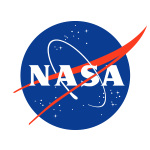Astrophysics Research and Analysis
Super-TIGER2: A Very-Large-Area, High-Resolution, Trans-Iron Cosmic Ray Investigation - Caltech Co-I
Project Description
This is a Co-I proposal from the California Institute of Technology for the proposal entitled "SuperTIGER-2: A Very-Large-Area, High-Resolution Trans-Iron Cosmic Ray Investigation" submitted by Principal Investigator W. R. Binns of Washington University in St. Louis. SuperTIGER is a very-large-area instrument for measuring the composition of galactic cosmic rays on high-altitude balloon flights over Antarctica. Super-TIGER-1 had a highly successful 55-day flight in 2012/2013. The excellent data quality enables us to clearly resolve all nuclei from Z=10 to Z=40. Additionally, although statistics are low, there appears to be clear resolution of elements with Z=50-60. The excellent data from this flight will enable us to achieve the initial goals of the program. The high performance of the instrument, both in charge resolution and collecting power, and the science that can be addressed by measurements of Z>40 nuclei, makes a compelling case to conduct additional flights to measure the abundances of individual nuclei up to Z=60. This is a 4-year proposal with the primary objective of measuring the abundances of individual nuclei with 41≤Z≤60 and to substantially increase the number of 30≤Z≤40 nuclei measured. This will be the first time that individual elemental abundances for 41≤Z≤60 will be obtained. These new measurements will provide sensitive tests and clarification of the OB-association model of galactic cosmic-ray origins and will test models for atomic processes by which nuclei are selected for acceleration to cosmic-ray energies. They will enable us to determine if the enrichment of refractory elements (those that exist primarily in dust grains in the interstellar medium) over volatile elements (those that exist primarily in the gas phase) extends into the Z=41-60 charge range. They will also enable us to unambiguously determine the extent of any r-process enrichment. SuperTIGER provides critical measurements to unravel the mystery of galactic cosmic ray (GCR) origins and complements instruments with different observational aims including AMS, CALET, BESS-Polar, CREAM, TRACER, and PAMELA. This investigation addresses NASA Strategic Goal 2.4—Discover how the universe works, explore how it began and evolved, and search for Earth-like planets. This is a suborbital astrophysics proposal. The proposed work will be performed by a collaboration of scientists from Washington University in St. Louis (PI institution), Goddard Space Flight Center (Co-I institution), the California Institute of Technology (Co-I institution, with JPL participation), and the University of Minnesota (Collaborating institution). SuperTIGER-2 will use the same techniques used in SuperTIGER (dE/dx and Cherenkov measurements combined with trajectory data to measure the charge and energy of cosmic ray nuclei. As in Super-TIGER1, Caltech will be responsible for aerogel radiators in one of the two Cherenkov counters in Super-TIGER-2. Caltech will also participate in integration and test, in monitoring the Antarctic balloon flight, and in data analysis activities.
More »
Anticipated Benefits
The Astrophysics Research and Analysis program (APRA) supports suborbital and suborbital-class investigations, development of detectors and supporting technology, laboratory astrophysics, and limited ground
More »
Primary U.S. Work Locations and Key Partners
| Organizations Performing Work | Role | Type | Location |
|---|---|---|---|
| California Institute of Technology (CalTech) | Lead Organization | Academia | Pasadena, California |
Primary U.S. Work Locations
-
California

Suggest an Edit
Recommend changes and additions to this project record.

